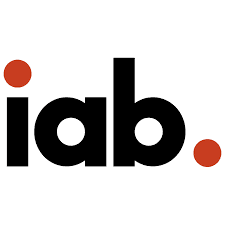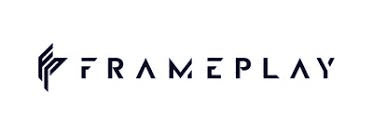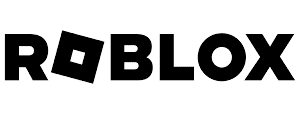Topic
- B2C
- Consumer Behavior/Understanding
- Media
- Research
On November 9th, the Media, Technology and Data practice hosted our first ever Game Day, Planning for Gaming. The day kicked off with Adam Cotumaccio, the 4As COO, welcoming all of the speakers and attendees and sharing his experience working with Microsoft’s Accessible Gaming team when he ran fundraising for the Muscular Dystrophy Association. One of the key themes of the day was how gaming is for everyone. The misperception that gaming is just for teenage boys was proven wrong through all of the quoted research throughout the day.
We then had Ricky Bacon, VP of Technology at Critical Mass and our Gaming & eSports Committee chair, share how video gaming generates more revenue than the film box office, music and streaming TV to the tune of $180 billion dollars. In fact it generates more revenue than all of those combined. It simply cannot be ignored. Beyond the broad gaming audience there is also a huge swath of gaming categories from casual, to mobile to hardcore but even within those there are subgenres like puzzles and sports. Ricky also emphasized that most gamers don’t have a cable subscription, and are using ad blockers, so traditional linear TV cannot reach this audience. With the average gamer playing for 8-12 hours per week, it presents a powerful opportunity for marketers to communicate with this consumer where they are.
Download the presentation slides here.
Next we had Zoe Soon, the IAB’s VP of Experience, join us to speak about the power of gaming and how it is driving culture. A powerful quote from Netflix that she shared was, “we compete and lose to FORTNITE more than HBO”. She also shared how more than $100 billion dollars was spent on virtual goods last year and shared examples of brands that launched products based on how successful they were selling digitally. Gaming is also influencing music with Assassin’s Creed winning a Grammy Award for their musical scores. Esports audiences grew to half a billion in 2022 and most major sports teams now have esports leagues.
Perhaps one of the biggest revelations during Zoe’s presentation was her note about how Super Bowl Ads have reached $7 million dollars while MrBeast can reach 100 million people for “far less than $7 million dollars”.
Download the presentation slides here.
Frameplay shared perspective about the scale of the opportunity with intrinsic in-game advertising. While Frameplay focuses on in-game advertising experiences, there are multiple available options to advertising in-game including adjacent, advergames, sponsored, skins, hard coded, audio, reward, and branded world. Regardless of the brand, there is a place in gaming for all advertisers. Frameplay shared how intrinsic in-game advertising can enhance the gaming experience by including ads in relevant places to replicate real world experiences, such as billboards in racing games and banners on the sides of hockey rinks, all without disrupting the game play.
Frameplay also offers a buying platform, programmatic integrations with DSPs and third-party data providers to simplify the buying process, and weave gaming into a workflow that agencies are familiar with. Frameplay also shared the unique capabilities that exist with measurement in gaming and the ability to capture data like viewable time on screen, percentage of the ad in view, and other metrics that are usually only available with eye tracking solutions. In terms of attention metrics, Frameplay shared some research that demonstrates how in-game advertising can outperform social benchmarks, mainly because gaming requires the full attention of the player.
Download the presentation slides here.
Julie Piskin, Head of Global Partner Programs and Rachel Rothkrug , Sr. Manager, Partner Development joined the discussion next to share how Roblox doesn’t view their platform as a gaming solution but as an “immersive media” platform creating a place for people to virtually come together to communicate and connect. A survey conducted by Roblox showed that 70% of people say that their Roblox avatar influences their in real life (IRL) style.
Roblox has 70M Daily Active Users who spend 2.4 hours a day on average playing Roblox which creates a huge opportunity for brands to engage. Roblox has teams that focus on specific verticals such as entertainment, travel, auto, CPG, fashion and retail, music and sports and looks for opportunities with brands for collaboration in a number of ways.
Brands just looking to get started with Roblox may create virtual items for people to buy, sell and trade and if brands are unsure of the value to players: “Karlie Kloss sold a limited crown for 1,000 Robux that is now being sold for 30x the original price” and drives “countless conversations and debates amongst the community”. Brands can create fully customized immersive experiences or integrate into existing popular experiences on Roblox to drive awareness and engagement. Just this year Roblox launched their Roblox Ads Manager where marketers can upload creative and bid on portal ads and sponsored experiences (traffic drivers which bring players to a custom experience), or image ads (to build awareness for brands).
Video ads are also available, bought through Roblox’s team directly in an open alpha. Depending on the level of engagement a brand is looking for there is a spectrum of advertising options that Roblox can support.
Download the presentation slides here.
And finally, Jordan Shlachter, Activision Blizzard Media’s Head of Measurement & Insights closed the day out with some key insights from their research to further highlight the possibilities of gaming but also shared some notes of caution about reaching the gaming community.
Gaming is projected to grow from 3.2 Billion gamers in 2022 to 3.5 Billion by 2024. He also shared how pop culture is being influenced by gaming with a number of movie releases such as the Last of Us, The Super Mario Brothers and other titles making it to the big screen. Jordan also shared that their research showed that 2/3rds of respondents said that, “gaming has become a regular part of their weekly media and entertainment diets, even greater than traditional live television”.
Jordan reaffirmed that gaming is for everyone with 46% of ages 55+ gaming weekly, 72% of ages 35-54 gaming weekly and 84% of ages 18-34 gaming weekly. While Jordan noted that they do note survey anyone under the age of 18, one can imagine that the numbers are even higher amongst that audience.
Their research also cited that gaming is a second screen staple with 85% of people using another device while watching TV. Due to the high attention required for gaming the second screen is becoming the primary one, and while gaming is the number one second screen activity noted in their research, social media, chatting, emailing, shopping and news were also contributors. This sort of split attention creates unique opportunities for marketers.
In perhaps a note of caution for marketers Jordan noted that gamers want “fluid, premium entertainment experiences”. Consumers are multitasking with media and “switch off in favor of another platform to avoid forced view ad experiences because they are not engaging or authentic to the environment they are being viewed within”. 60% noted that they skip TV ads whenever possible.
So what makes up a premium mobile ad? The respondents rated from highest to lowest the following characteristics.
- Short in length
- High-quality graphics
- Timed to not interrupt gameplay
- Relevant to me
- Non-intrusive to gameplay
Jordan also shared that we are increasingly seeing fandom playing an important role in brand growth, driving purchase behavior within gaming experiences, where in-game brands are seen as being premium, credible and hip/cool/trendy.
Regardless of where brands are in their video game advertising journey, there is an opportunity for them. All audiences are represented in gaming, all ages are gaming and when done correctly gaming advertising opportunities can create meaningful branded experiences, reach people where they are spending a lot of their time and attention and add new and measurable opportunities to their marketing efforts.
Related Research
Zefr Makes Brand Safety, Suitability Reporting Generally Available to YouTube Advertisers
Zefr, the global leader in brand suitability technology, this week announced the launch of its new Brand Safety…
Wunderman Thomspon: B2B Ecommerce Benchmarking Report
Digital commerce is both a differentiator and a great equalizer. Since we’ve began compiling this report 8 years…
Women’s Sports: The Winning Play for Your Brand
Advertisers, brands, and sponsors can no longer overlook women’s professional and college sports when developing their marketing plans.…






